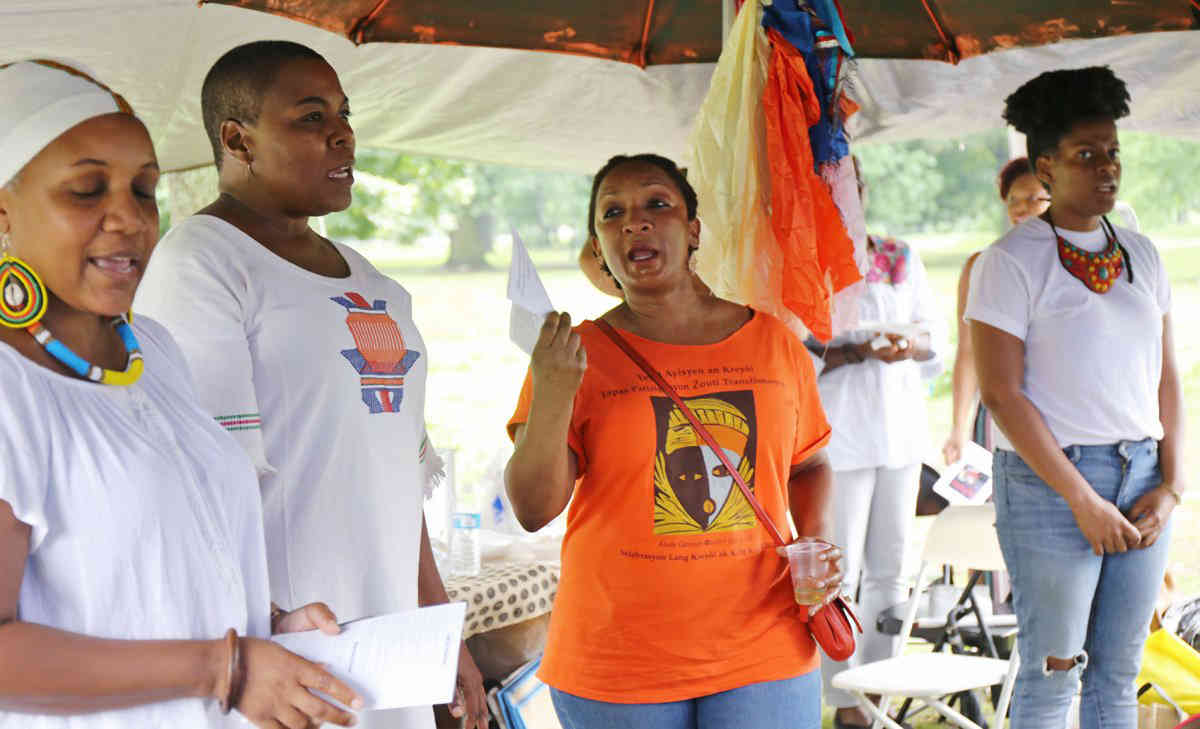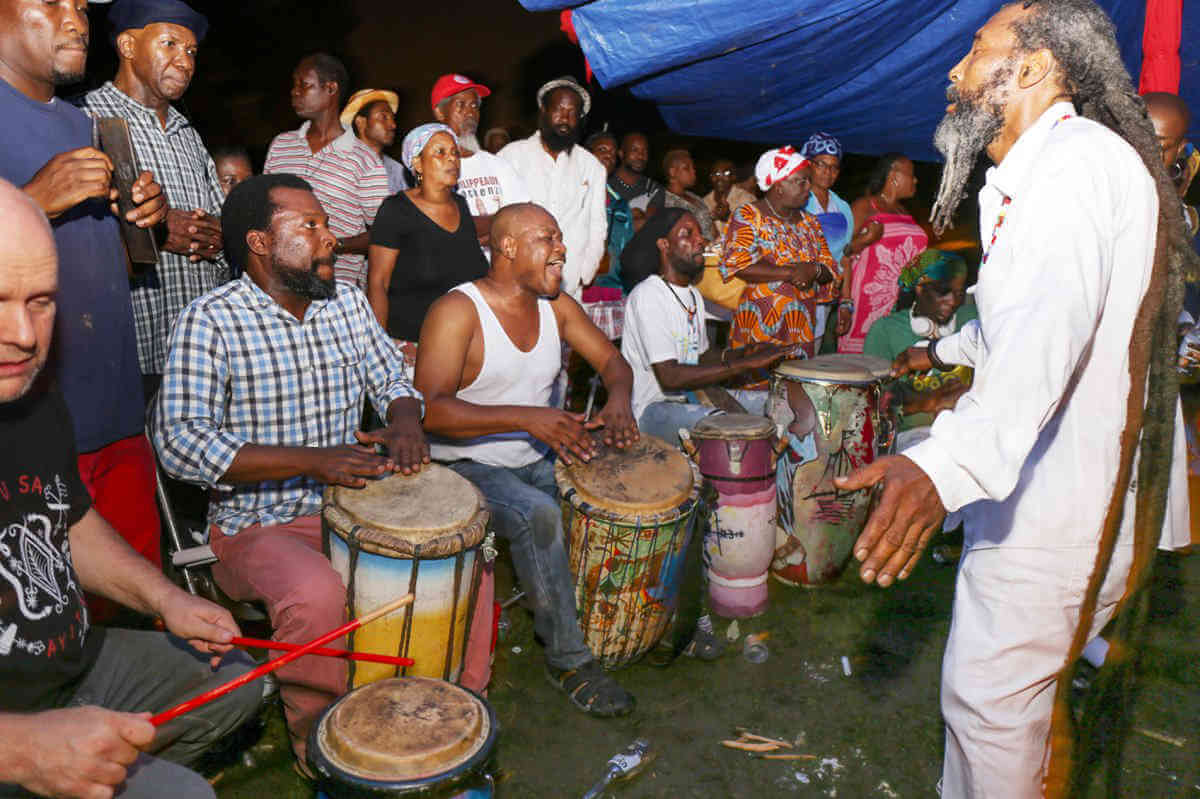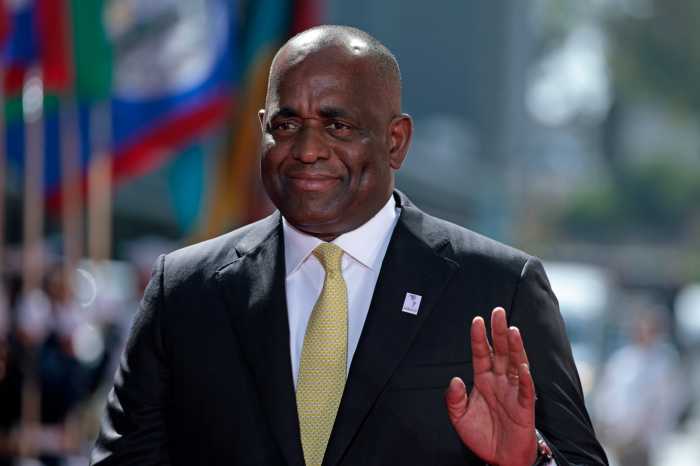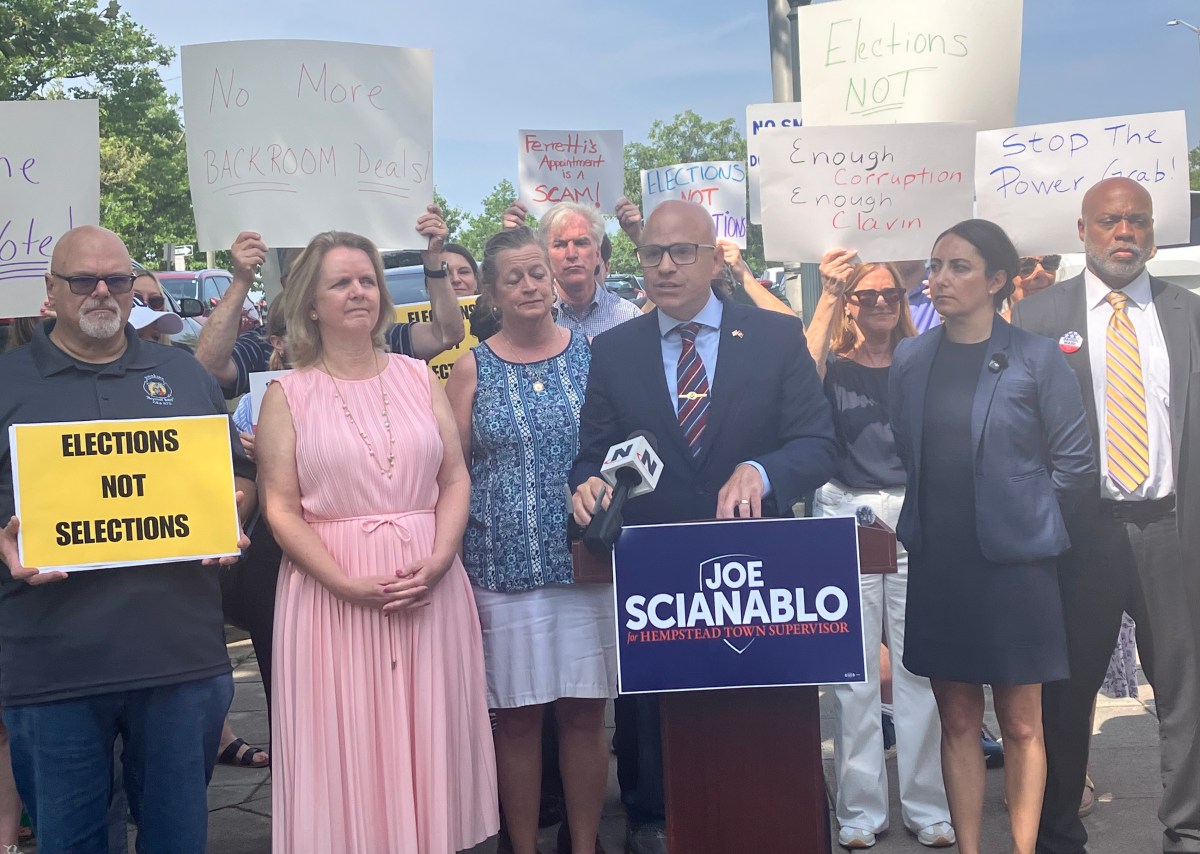Not a picnicker in sight! The usually bustling grassy corner of Prospect Park near Empire Blvd. was empty on Saturday, Aug. 11. Intermittent rain kept everyone away, except… except, that you can’t change an anniversary date of enormous significance!
Artist James Deenps Bazile, known as Grand Bwa, founded and has been overseeing a ceremony that celebrates the anniversary, Aug. 14, 1791 — 227 years ago — of a rite that launched the Haitian revolution.
In spite of the rain, dedicated Haitian community members trickled to the edge of Prospect Park Lake to celebrate Bwa Kayiman, as they have at this spot for the past 26 years.
The story goes that in northern Haiti the night ceremony of Bwa Kay Iman occurred when enslaved habitants on the then French colony of Saint-Domingue met and swore to die fighting for freedom rather than live and have their descendants live in bondage. Voudou priest Boukman Dutty, brought from Jamaica and priestess Cecile Fatiman led the ceremony.
Seven days after the ceremony, the habitants rose up, torched plantations, killed enslavers and took control of the northern part of Saint-Domingue. In an uprising that lasted 13 years, more than 100,000 European troops died as well as the white enslavers that didn’t flee. Haiti was proclaimed a free country on Jan. 1, 1804, taking her name from the indigenous Tainos who called the land Ayiti, land of mountains.
At Prospect Park, anticipating rain, early volunteers created shelter by stringing tarps to cover the ceremonial area and the observer section, scattered with folding chairs. A pole adorned with scarves of many colors stood center, functioning as the “potomitan”— the sacramental pillar in the middle of the space. And with that, what resembled a peristyle, a vodou temple emerged.
From another pole, draped in red, a framed picture of Jean-Jacques Dessalines hung. “Dessalines is regarded by Haitians as one of the outstanding heroes in the struggle against slavery and colonialism,” Makini Armand informs. “He was a fierce warrior; his motto was ‘koupe tet, boule kay,’ cut off the head and burn down the house.”
Beginning with the formalities of the Haitian national anthem and Boukman’s prayer, the ceremony continued for a good five hours with incantations, prayers, dancing and drumming celebrating the Haitian spirits.
Candles continued to be lit from the start and into the night. Armand explains that candles connect the physical world with the spiritual realm, and that the white candle is universal to all the spirits. She adds that candles are also lit for the ancestors because “our ancestors are the foundation of who we are. The flame represents the light of each person.”
Years back, there had been a few tensions between organizers/celebrants and NY Parks and police. But, as Bwa Kayiman is clearly recognized as an important cultural event for the community, detente has been attained, along with a permit for the afternoon/evening ceremony.
On leaving the park that night, no others were to be seen. This once, the Haitian community had the corner all to themselves to pay homage on such a monumental occasion.






















